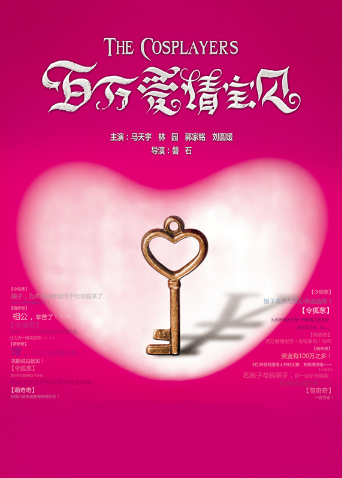数字电影《父亲的维也纳》的故事根据威海市十佳感动人物邹树君的真人真事改编,日韩描述了主人公从北京音乐学院毕业后,日韩放弃难得的留京机会,毅然回乡建设当地群众文化事业的感人故事。
数字电影《父亲的维也纳》的故事根据威海市十佳感动人物邹树君的真人真事改编,日韩描述了主人公从北京音乐学院毕业后,日韩放弃难得的留京机会,毅然回乡建设当地群众文化事业的感人故事。

回复 :Two differences between this Austrian version and the generally available American version are immediately obvious: they differ both in their length and in the language of the intertitles. The American version is only 1,883 metres long - at 18 frames per second a difference of some 7 minutes to the Austrian version with 2,045 metres. Whereas we originally presumed only a negligible difference, resulting from the varying length of the intertitles, a direct comparison has nevertheless shown that the Austrian version differs from the American version both in the montage and in the duration of individual scenes. Yet how could it happen that the later regional distribution of a canonical US silent film was longer than the "original version"?The prevalent American version of Blind Husbands does not correspond to the version shown at the premiere of 1919. This little-known fact was already published by Richard Koszarski in 1983. The film was re-released by Universal Pictures in 1924, in a version that was 1,365 feet (416 metres) shorter. At 18 frames per second, this amounts to a time difference of 20 minutes! "Titles were altered, snippets of action removed and at least one major scene taken out entirely, where von Steuben and Margaret visit a small local chapel." (Koszarski)From the present state of research we can assume that all the known American copies of the film derive from this shortened re-release version, a copy of which Universal donated to the Museum of Modern Art in 1941. According to Koszarski the original negative of the film was destroyed sometime between 1956 and 1961 and has therefore been irretrievably lost. This information casts an interesting light on the Austrian version, which can be dated to the period between the summer of 1921 and the winter of 1922. Furthermore, the copy is some 200 metres longer than the US version of 1924. If one follows the details given by Richard Koszarski and Arthur Lennig, this means that, as far as both its date and its length are concerned, the Austrian version lies almost exactly in the middle between the (lost) version shown at the premiere and the re-released one.A large part of the additional length of the film can be traced to cuts that were made to the 1924 version in almost every shot. Koszarski describes how the beginning and the end of scenes were trimmed, in order to "speed up" the film. However, more exciting was the discovery that the Austrian version contains shots that are missing in the American one - shots/countershots, intertitles - and furthermore shows differences in its montage (i.e. the placing of the individual shots within a sequence). All this indicates that Die Rache der Berge constitutes the oldest and most completely preserved material of the film.
回复 :唐景龙年间,坊间妖祸肆意,百姓民不聊生。秦杰(刘旭阳饰)作为太子李隆基的贴身侍卫,誓要与妖决雌雄,为了重振秦家威名,稳固大唐江山根基,他求助于湖底妖仙水月(于轩鸿灏饰)为其斩妖除魔。宫廷内斗、江湖纷争以及光怪陆离的妖界让秦杰倍感压力,在关键时刻,上仙水月为帮秦杰,不惜与魔头镜花为敌,血战群妖。神秘莫测的唐朝世界,虚拟离奇的各类妖仙,究竟谁才是幕后黑手?
回复 :Patrick Messina是一名专利律师,在他的专业领域他有着极高的权利及威望。然而他却被诊断出患了不治之症,这无疑是晴天霹雳。在面对他的最后一名顾客时,他得知这名顾客是一个医生,来自西西里岛,在那里有一颗生长了上百年的橄榄树,这棵树的叶子可以治百病。为了寻找到这棵树,也为了验证传说的真实性,Patrick踏上了旅程。包治百病的百年老树究竟是科学的谜题还是圣经中古老的传说?面对人生的疑惑与信仰,也为了探寻从前,现在以及过去的关系,Patrick不断前行着……

